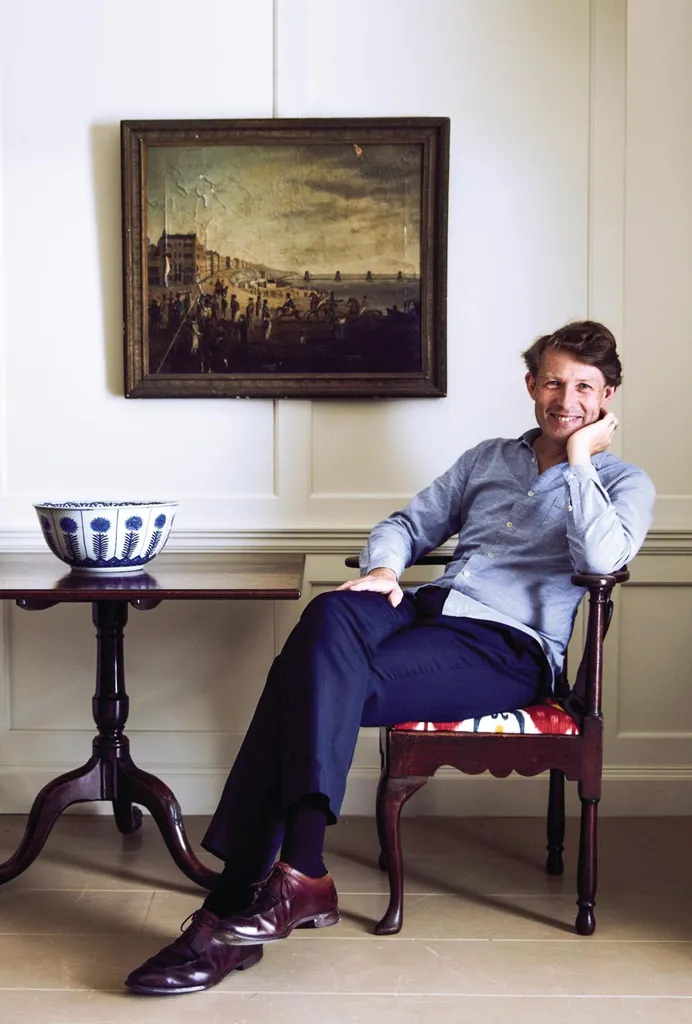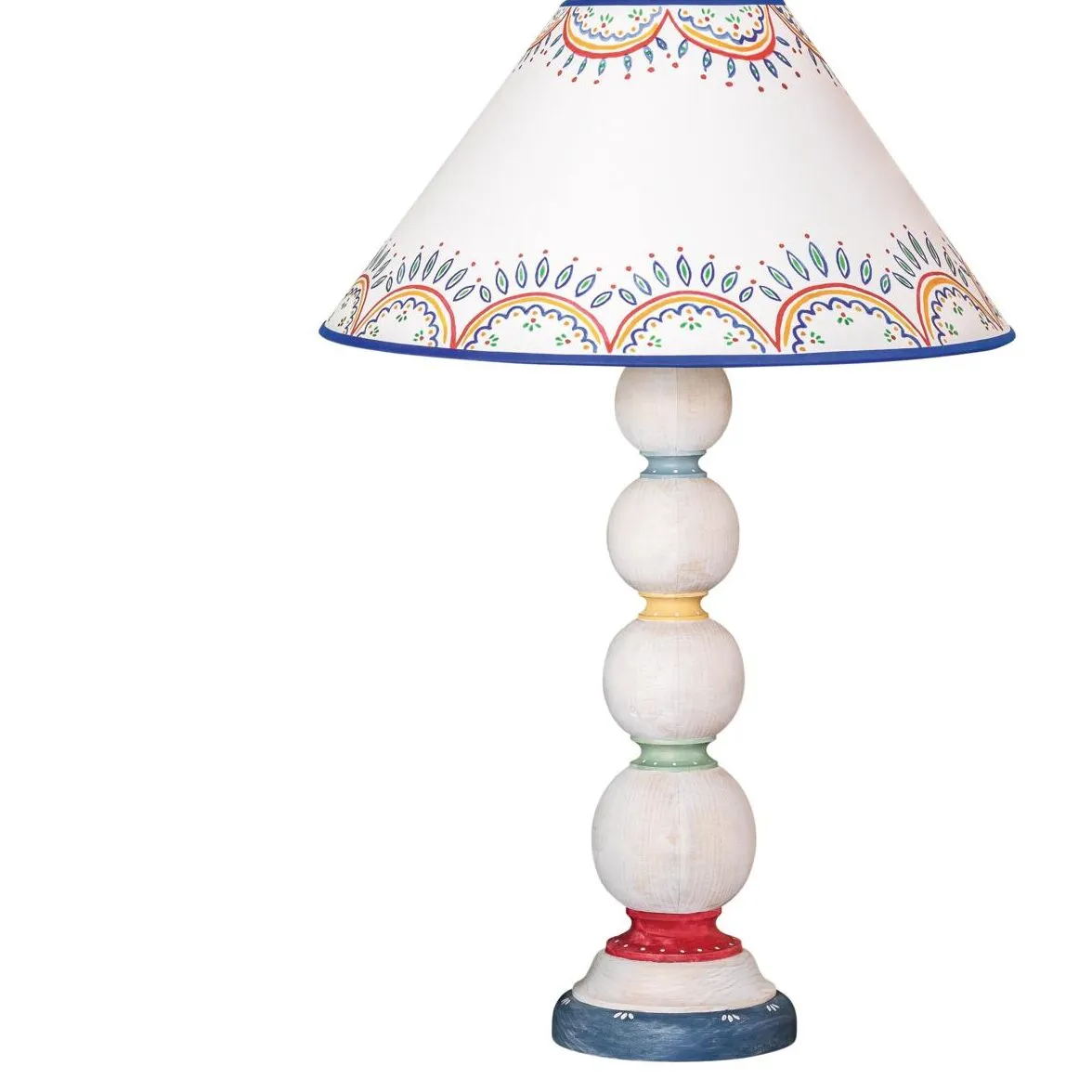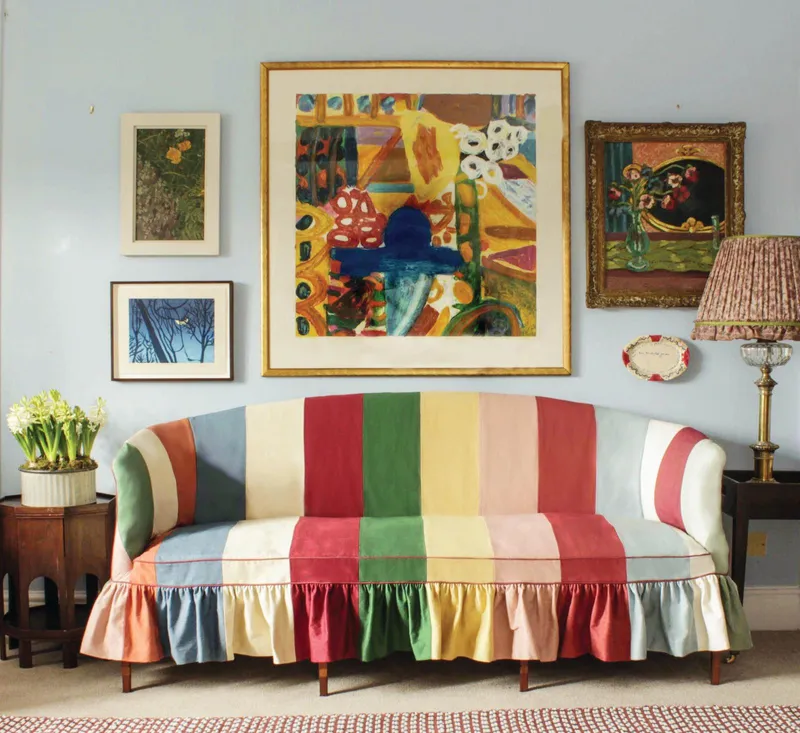For William Morris, it was the riverbanks and meadows surrounding Kelmscott Manor in Oxfordshire that fuelled his creativity. His timeless Willow Bough pattern owes its design to the trees that grew along the waterways close to his garden. Meanwhile, Edward Bawden was drawn to British towns and cities, as well as the countryside, and his most famous works immortalise London’s landmarks, especially its markets.
The hills and vales of Dorset and Sussex were a constant source of inspiration for members of the Bloomsbury Group, so it’s no surprise that some of Vanessa Bell’s most significant paintings are of Studland Beach. For centuries, designers and artists have turned to the world around them as a source of inspiration for their work.
What of today’s artists and designers? Where do they seek inspiration? Are they influenced by the same places as the artists of the past, and what is it about these buildings, cities and streets that sparks creativity?

Helen Parker, Creative director at deVOL
Spitalfields, Lanhydrock and Shugborough Hall
I think the actual building itself is probably the most influential part of any design. I have a particular love of the Georgian houses around Spitalfields in east London. I wander these streets and photograph the coloured doors and peer through the windows and see such atmosphere and style within.
The people who live in these houses are very considerate of the history of the buildings and go to great lengths to keep the feel and atmosphere of the original homes. This I find truly inspirational – that people will tirelessly recreate the perfection of those Georgian interiors and do it with such accuracy and care, creating rooms and spaces that are so full of soul and charm.

There is a wonderful shop called Town House on Fournier Street in Spitalfields that sells beautiful and unusual pots, old and new, antiques, oddities and books. It is all housed in one of these beautiful Georgian properties and the experience of walking around it is so special – you can wander around the rooms and go down into the kitchen.
Finding colour inspiration is the most important part of my wanderings, especially in Spitalfields, whereas in places such as Lanhydrock house in Cornwall or Shugborough Hall in Staffordshire it’s the cupboards and fittings that I am most keen things that still look great today: a light or a table that are so simple and practical that you can’t help but wonder why they are retired to simply being looked at in a National Trust property.

This kind of find is what excites us at deVOL – we see potential in resurrecting an old item and reinventing it for our customers to enjoy in their homes. The Butler’s Pantry was inspired by a cupboard at Shugborough.

I love how the drawers are deeper than the cupboard, creating a ledge. This feature instantly delighted us and had us imagining little children using the ledge as an impromptu seat or driving their toy cars along it. It has that certain something that you can’t put your finger on, but when you look at it, it makes you smile. devolkitchens.co.uk

Angie Lewin, Printmaker, painter and designer
Kettle’s Yard, Cambridge
I first visited Kettle’s Yard entirely by accident when a friend and I were spending a day in Cambridge in the early 1980s. We spotted and followed a sign, past a church, to a cottage. We rang the doorbell – a cork fishing float on a rope – and were welcomed into a calm, light living space.
I suppose we expected a museum or a gallery, but Jim and Helen Ede’s former home was a revelation. Works by artists including Ben and Winifred Nicholson, David Jones, Christopher Wood and Henri Gaudier-Brzeska are displayed among domestic objects, natural finds and plants. It instantly made it clear to me that art should be an integral part of daily life and that I would definitely go to art school.

Some paintings are hung low on the walls so that they can be viewed all the better from a chair, which you are encouraged to do. A simple glass dish contains feathers and reflects the layered subtlety of a David Jones still life. Even the small downstairs bathroom contains a Ben Nicholson fabric.
My wood engraving, Pebble Spiral, created for The Book of Pebbles by Christopher Stocks, is inspired by Jim’s display of pebbles. The book features a chapter on Jim’s passion for collecting and how Kettle’s Yard might be considered to be the ‘Louvre of the Pebble’.

I go there whenever I’m in Cambridge, even if I only manage a brief visit. Each time, I see the works that I know so well but also make new discoveries and associations. angielewin.co.uk

Max Rollitt, Interior designer, furniture maker and antiques dealer
The Metropolitan Museum of Art and MoMA, New York
I find that spending time in a gallery such as MoMA or The Met, where I can be immersed in glorious colours, thought-provoking pieces and rooms full of beautiful art from all over the world, energises my own creativity.
For me, it’s almost as much about the gallery spaces – and the city they’re in – as it is about what’s actually in these museums. I take photos of everything that inspires me, so if I look back to a recent trip to New York I can see an extraordinary Yupik coat embellished with tiny beaks and feathers along its seams and a Coeur d’Alene beaded bag at The Met.

Next up, as I walk through Manhattan, the panelling of a newly painted front door on Fifth Avenue, and a stone window architrave with a particularly nice keystone. Then, having reached MoMA, Matisse’s The Rose Marble Table and a close-up of Family Portrait, II, by Florine Stettheimer. maxrollitt.com

Tess Newall, Decorative artist
Charleston, East Sussex
I am lucky that my studio is a stone’s throw from Charleston farmhouse. On my bike ride to the studio I often take a detour and cycle down the farm track from the Downs, passing a herd of cows on approach to the pink and blue door. With towering hollyhocks and a pond full of lily pads, even just the grounds around Charleston are magic to sit in and think.
But the real wonder lies inside its walls; every surface has been decorated and made more beautiful by Vanessa Bell and Duncan Grant. I love the sheer joy that Charleston exudes. It doesn’t take itself too seriously. Duncan and Vanessa were having fun and not being precious – brushstrokes are free and rhythmic, and the things they decorated were often functional objects that were intended to be used.

I also love the variety within their work – they experimented with many different mark-making techniques. The Garden Room features a hand-painted wallpaper with a Paisley motif cut from a sponge creating a repeat pattern, a hand-painted squiggle runs along the top of the wall with quick and irregular looping and the fireplace has been given a naive faux-marbled effect.
When I first visited Charleston 10 years ago, I left wanting to paint everything I owned. I was already a decorative artist, but in film working on set designs; I hadn’t ever seen a British domestic space so painted. I often use particular Charleston motifs and colour combinations in my work now.

But, for me, the main inspiration is the Bloomsbury Group’s approach – they decorated without overthinking. Their creativity was a way of life, and their interior decoration was a means of self-expression. I think in the world of social media we can become fixated on what others think, when really we should just do what feels right.

I always try to sketch ideas from life, as I think it captures a liveliness that can become lost in a photo. I also think that the motion of sketching makes you really observe something – observation is the first step in developing a design. In my decorative painting work I always begin with working out what I want people to feel when they enter a space and work back from that.
So I think that when working out why you love a design reference, it helps to describe what feeling it evokes and keep that at the front of your mind. tessnewall.com

Octavia Dickinson, Interior designer
Tetbury and her childhood home
I’m fortunate to live next to two places that I find inspiring for my work – my childhood home and the town of Tetbury. I often pop over to my parents’ house to measure up a height of tongue and groove or look at the moulding on a door, or profile of a stone surface.
My parents bought the house just before I was born and have made it and the garden their life’s work. I feel at peace when I walk in the garden. It’s the perfect place to clear my mind, to give me space to think, but also to inspire me that beautiful things can be created from nothing.

I feel that the house embodies the English country house style, which is all about how it makes someone feel, as well as what they see. The house has great bones: old flagstone floors, wooden staircase, Georgian panelled doors and shutters – decorative details that I appropriate for many of my projects.
My father is an art dealer and collector of beautiful and interesting things, so I find it incredibly inspiring looking at the way my parents have designed the interiors. But also how their passion for collecting can bring together so many wonderful, diverse things in such a harmonious manner.
Tetbury is a sweet market town, architecturally and aesthetically pleasing, and many of the shops have lovely architectural details. I also love that I can see many objects in one place here. Every time I visit, there is something different to see and learn from.

Looking at antique furniture highlights how many different ways there are, say, to design a drawer, and I pull on these examples when designing joinery and furniture. I love speaking to the dealers about the provenance of the pieces and, for the more unusual details, working out what they were made for. Some of my favourite shops include Philip Adler, Lorfords, Brownrigg, Top Banana and Dean Antiques.
Not only do I spend a lot of time here sourcing furniture and antiques for clients, but I also get some of my best ideas for designs. If I can’t find the right antique for a project, then I will often design a piece of furniture.

When browsing antiques shops, I come across a multitude of different styles, hinges, handles, mouldings, joints and so on, all of which are infused into my designs. I also see first-hand the mixing of styles and dates of furniture.
I take a lot of photographs, which I try to organise on my phone to help me when I’m back in the office. If I’m designing something in particular, then I might sketch it up with notes. I try to visit houses, private or public, as much as I can. Even if I have my two small children in tow and it’s a fleeting visit, I race them around trying to pick up snippets of inspiration.
I’m incredibly nosy, but I’m secretly pleased that I am, as I can feel as inspired by a stately drawing room as the inside of an attic bedroom cupboard. octaviadickinson.com
